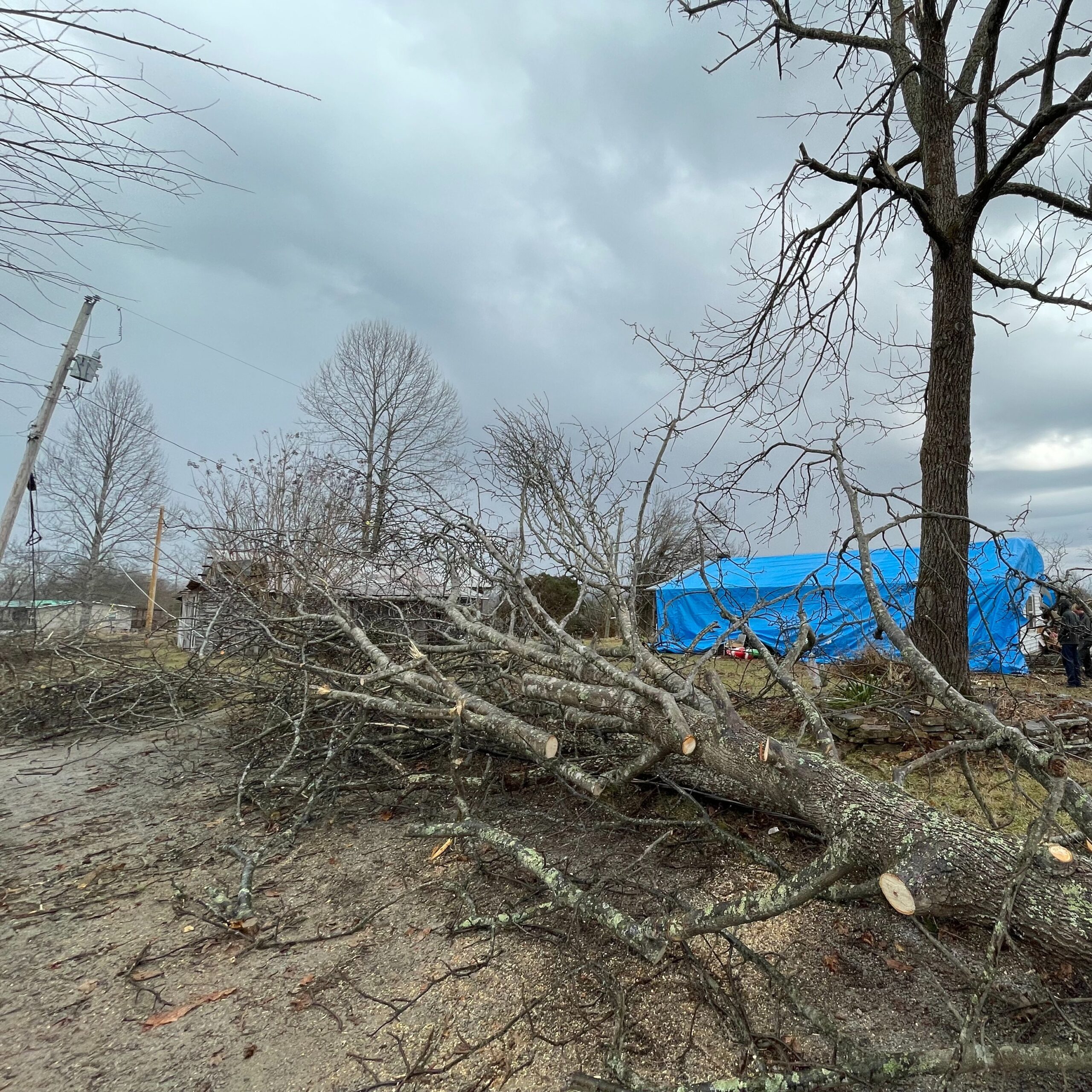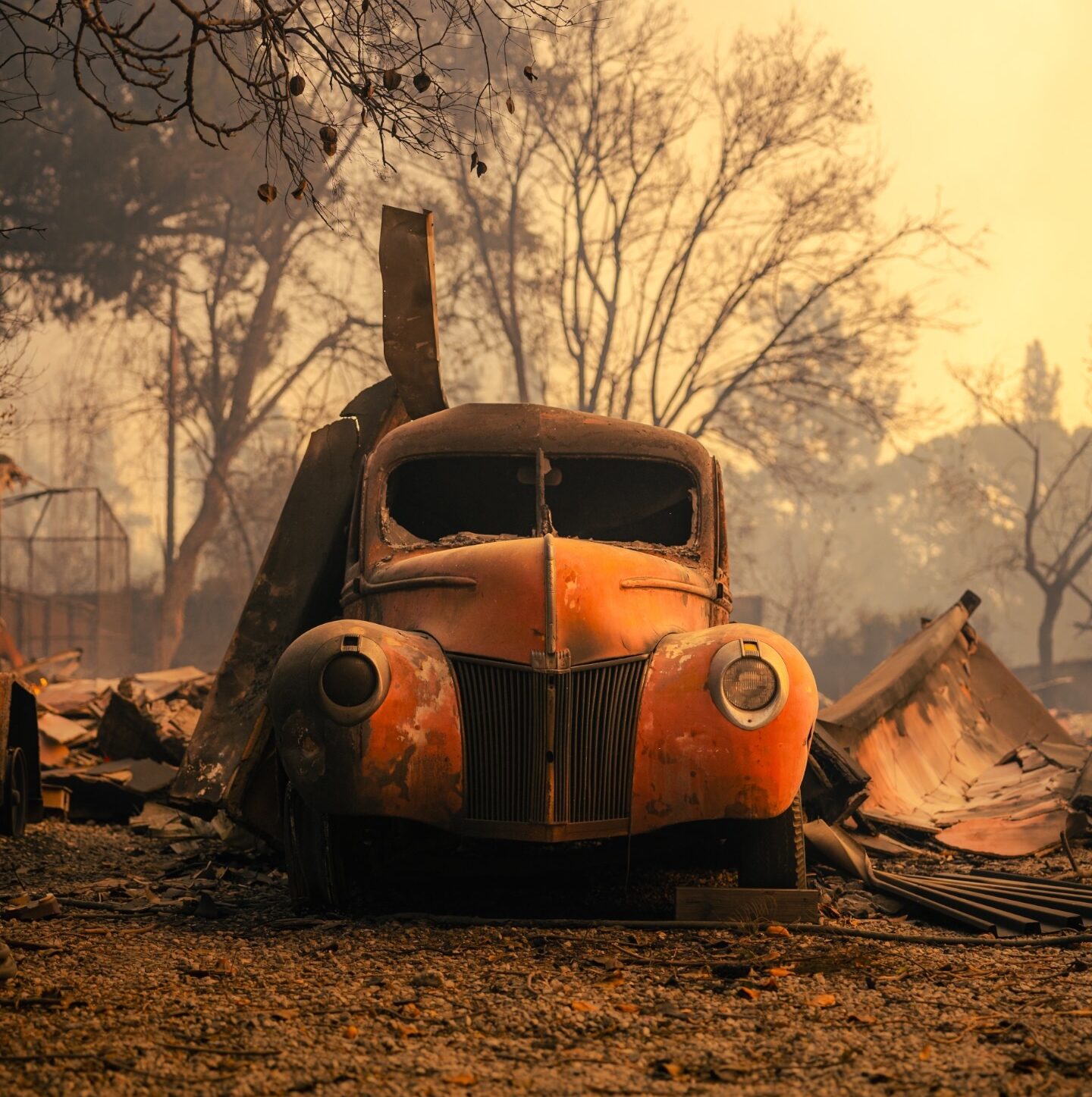What we’re watching: Weekly disaster update, February 10

We know all too well that disaster can strike anytime, anywhere in the world. Some disasters make headlines; others do not. Here at the Center for Disaster Philanthropy (CDP), we monitor the status of disasters worldwide and compile a list of the ones we’re tracking weekly, along with relevant disaster-related media coverage.
Here’s what we’re watching for the week of Feb. 10, 2025.
New or Emerging Disasters
Tornadoes – Tennessee: A tornado outbreak across several southern states on Feb. 5 and Feb. 6 caused severe damage in some communities. At least four tornadoes classified as three EF-1s and one EF-2 on the Fujita scale struck eastern and middle Tennessee at night on Feb. 6, killing two people and injuring three others. The storm caused widespread damage and flooding, and schools closed on Friday. At least twelve homes sustained severe damage. Tennessee experiences more tornadoes at night than any other state.
A small EF-1 in Kentucky caused minimal damage.
The presence of La Niña is expected to cause more tornadoes in the U.S. South, which is known to be more vulnerable to the impacts of tornadoes. NOAA says they are more likely to be EF-2s and stronger, which can cause more damage.
Wildfires – Chile: The government of Chile issued two evacuation alerts for the southern region of La Araucanía, aiming to protect 860,000 people from damaging wildfires. At least two people have died. So far, about 83,000 acres have been burned by the fires, but the government has not released figures regarding the amount of damage or the number of people affected.
Previous/Ongoing Disasters
Earthquake – Turkey, Syria: Feb. 6 marked the second anniversary of the devastating 7.8 magnitude earthquake that rocked Turkey and Syria, claiming 59,000 lives. Hundreds of thousands of homes and buildings were destroyed, razing entire communities. As of the end of 2024, about 45% of replacement housing has been completed in Turkey, with an additional 452,983 shops, homes and other infrastructure to be constructed this year.
Two years after the earthquake, over 200,000 families are still living in container sites. After the influx of humanitarian aid in the immediate aftermath of the disaster, funding has sharply decreased, and millions of displaced people find themselves without basic amenities like safe shelter, cooking utensils and electricity. In Syria, the situation for survivors is even less secure after the recent fall of President Bashar Assad.
H5N1 – New York: Governor Hochul of New York forced the temporary closing of live bird markets in New York City and the surrounding suburbs after inspectors discovered 7 cases of bird flu in poultry. All 50 states and Puerto Rico have detected bird flu in various animal species, and at least ten states have recorded cases of bird flu in humans.
Complex Humanitarian Emergencies – Haiti
Many places worldwide are experiencing emergencies caused by conflict, climate change, drought, famine, economic challenges and other conditions that combine to create a complex humanitarian emergency (CHE). CDP maintains profiles on several CHEs; these and others are profiled here weekly.
A lack of police coupled with gang violence and political entanglement with armed groups have transformed Haiti into one of the deadliest countries in the world.
“It is a horrific time to be a child in Haiti, with violence upending lives and forcing more children and families from their homes,” said UNICEF Executive Director Catherine Russell.
Children in Haiti face displacement, kidnapping, cholera, poverty and disasters. Child recruitment to gangs has risen by 70% over the last year, and it’s estimated that half of all gang members are children. Gangs lure children in with the promise of food, security and belonging. Now, dozens of children are being held in prison in Port-au-Prince, where 85% of the city is controlled by armed groups.
The number of internally displaced children has risen by 50% since September 2024, with 1 in 8 children displaced. Access to basic services like health care, education, sanitation and clean water has been sharply restricted, leaving many children and families vulnerable to malnutrition and disease. At least 6,000 people face famine-like conditions. Displacement camps have become hotbeds of cholera, with Haiti reporting 88,000 cases of the disease, which disproportionately affects children.
Sexual violence against children has increased by 1000% in the last year.
The children of Haiti have been robbed of the right to childhood. It is estimated that at least 3 million children need humanitarian aid.
The Center for Disaster Philanthropy maintains a Global Recovery Fund that provides donors an efficient, flexible solution to support recovery efforts for people affected by sudden and slow-onset disasters or protracted humanitarian emergencies worldwide. Select “2024 Haiti Humanitarian Crisis” from the “I want to support” dropdown menu on the donation form.
Join us this Thursday, February 13
Webinar: Destructive and unexpected: What funders should know about wildfire recovery

What We’re Reading
- If FEMA didn’t exist, could states handle the disaster response alone? – The Conversation: Without a federally coordinated effort to help states recover after disaster strikes, recovery might end up being localized within states, with nonprofits and community efforts attempting to fill the financial gaps. This could lead to uneven recovery efforts, with wealthier areas recovering more fully and poorer areas facing longer and less complete recovery, undermining their resilience to future disasters.
- How local humanitarian groups are navigating the US aid freeze havoc – The New Humanitarian: “ … the aid picture includes local organisations that range from tiny grassroots groups to national NGOs – in many cases, part of the communities they help, and delivering projects partly with funding passed through big aid agencies. These local NGOs make up more than 80% of the world’s humanitarian organisations, according to a tally by analysis outfit Humanitarian Outcomes. For many, the US funding freeze is existential: Some have shuttered nearly overnight, too dependent on intermediary funding and with no reserves or other donors to fill the gap.”
A moment of hope…The Indigenous Yanomami communities of the Brazilian rainforest are celebrating this week after President Lula da Silva cracked down on illegal mining in the region, which was responsible for spreading hunger, disease and malnutrition among the Yanomami people. Under former President Bolsonaro, armed gangs had infiltrated the Amazon and caused havoc, destroying the health infrastructure there, which caused a spike in infant deaths. The worst of the crisis appears to be over now that newly resourced health clinics are recording drops in malnutrition and infant mortality.
